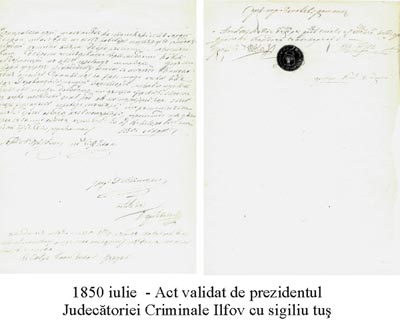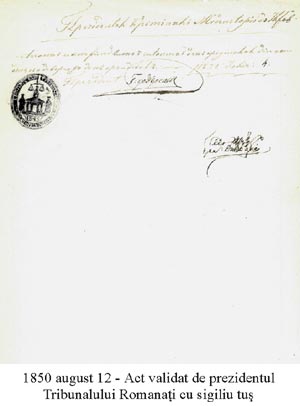


The institution, in its current form, dates from 17th of November 1995, date on which the former State Notariats have concluded their activity, and the institution of civil-law notary has been born, as it is known today to the general public. However, we do not believe that it is of no relevance to recall that the first forms of notarial organization appeared on the Romanian territory in the full Middle Ages, the documentary attestations placing the beginnings of the institution somewhere between the XIII and the XIV century. Both the royal and the princely chancellery, but also the «places of confirmation» represent, over time, a set of practices regarding the drafting, the authentication, the storage and the copying of documents that have their origins in the functioning system of the papal chancellery and, later in time, in the roman system. In all Romanian provinces, the notary’s status (chancellor, grammarian, in Walachia and Moldavia) was, from the beginning, very well delimited, and social prominence, but also the level of fees perceived for drafting the documents - mostly concerning property disputes - made this function very popular, sometimes by transmitting this job in the family. Involved in the preparation of public and private documents, of international treaties, the notaries lend certain formulas, they adopt the style of neighbors, they take on different shapes from each other, colors, dimensions of seals, (gold, wax, smoke) with which they were authenticating those respective documents. Interpreters for the texts of law,
 editors of the whole body of public and private documents, with probative value. In the Middle Ages, the notaries represent one of the first structured professional bodies from the country. Regardless of the policy of lords, of the state of sovereignty, sovereignty or dependence, of the establishment of the Phanariot regime in Walachia and Moldavia, or of the Austrian domination, and then Austro-Hungarian in Transylvania, the notaries watched over the rigorous preparation of documents. For more than a few centuries, they existed in parallel notarial compartments attached to the courts operating in the Romanian Principalities, but also the notaries conducting their activity in Transylvania and Northern Bukovina. Those two parallel systems will disappear together with the emergence of the new notarial legislation, which set up the State Notariat. So that, in accordance with the Decree no. 79/31.03.1950,the State Notariat was founded subsequently restructured under the Decree no 377/1960, as an administrative body, having attributions that are specific to the non-contentious procedure. Through the emergence of the Law of civil-law notaries and notarial activity, no 36/1995, the law texts, mentioned above, are being abolished, establishing the modern foundations for the development of the notarial activity. In Romania, the new organization system, according to Law of civil-law notaries and notarial activity, no 36/1995, marked the transition from the state system to a liberal one, configured especially by the autonomous statute of the function of civil-law notary.
editors of the whole body of public and private documents, with probative value. In the Middle Ages, the notaries represent one of the first structured professional bodies from the country. Regardless of the policy of lords, of the state of sovereignty, sovereignty or dependence, of the establishment of the Phanariot regime in Walachia and Moldavia, or of the Austrian domination, and then Austro-Hungarian in Transylvania, the notaries watched over the rigorous preparation of documents. For more than a few centuries, they existed in parallel notarial compartments attached to the courts operating in the Romanian Principalities, but also the notaries conducting their activity in Transylvania and Northern Bukovina. Those two parallel systems will disappear together with the emergence of the new notarial legislation, which set up the State Notariat. So that, in accordance with the Decree no. 79/31.03.1950,the State Notariat was founded subsequently restructured under the Decree no 377/1960, as an administrative body, having attributions that are specific to the non-contentious procedure. Through the emergence of the Law of civil-law notaries and notarial activity, no 36/1995, the law texts, mentioned above, are being abolished, establishing the modern foundations for the development of the notarial activity. In Romania, the new organization system, according to Law of civil-law notaries and notarial activity, no 36/1995, marked the transition from the state system to a liberal one, configured especially by the autonomous statute of the function of civil-law notary.


